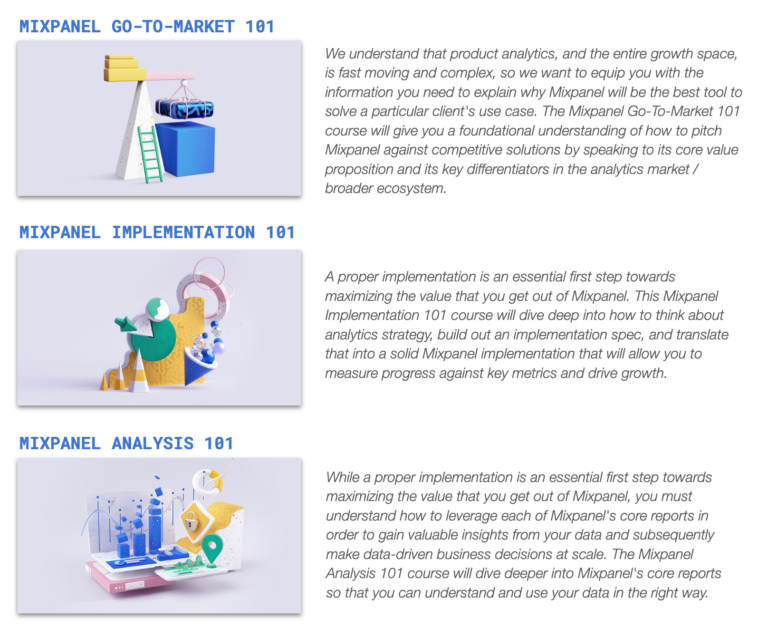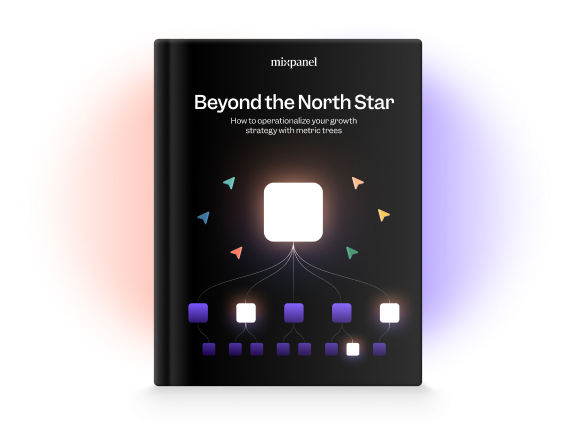Mixpanel Collective: Solution Partner Program
Continuously delivering digital products and experiences that users love is no easy task. It requires navigating an exponentially crowded MarTech landscape, making data un-siloed and accessible, implementing and integrating new technologies, then equipping teams with the right skills and mindset to translate all of that data and technology into business value. It’s no surprise then that more and more product, marketing, and data teams are looking for help.
It’s for that reason we’re proud to announce the Mixpanel Collective, the next iteration of our Partner Program. Though we initially launched our Solution Partner Program back in October 2018, we’ve tripled down on our investment in building a global network of trusted experts and advisors.
With more than 27,000+ Mixpanel users, it’s clear that innovators come in all shapes and sizes. The Mixpanel Collective aims to connect our customers with the right experience and expertise. Whether you need help establishing the right product metrics, correlating a feature launch with increased user conversion, integrating Mixpanel with your customer data platform, attribution, or engagement solution, or simply another set of hands to help with implementation—driving innovation is faster and easier with the Mixpanel Collective.
New Partner Certification Series
As evidenced by our 80+ feature shipments in 2019, Mixpanel is constantly releasing new product updates. Keeping pace with our Engineering, Product, and Design team of 95+ talented individuals is challenging for even the most sophisticated Mixpanel users (and employees!).
To equip partners with the tools and training they need to make more Mixpanel users more successful, we’ve introduced an updated Partner Certification Series through Mixpanel University. Individuals can currently become certified in three main subject areas in order to become a Mixpanel Certified Partner:

We have spent the last 3-4 months piloting Mixpanel University training with an inaugural cohort of partners—iterating and improving along the way. In this short period of time, 200+ individuals have registered for the course series and nearly 125+ users from more than 25+ different countries around the world have already embarked on their journey towards becoming a Certified Partner within the Mixpanel Collective. Though we’re still in the early days, we’re overwhelmed by the level of engagement and positive feedback we’ve received. Angie Cho, a Growth Manager at WillowTree, says that she“found the course to be very helpful and full of a lot of valuable resources and examples to enable [her] to use Mixpanel effectively in client engagement. Particularly loved all of the additional PDF docs and resources.“
While fairly comprehensive, these core 101-level offerings are just the tip of the iceberg. We’ll continue to add more learning paths and continued enablement offerings in order to help our global network of trusted partners develop in-depth product analytics expertise.
Unlocking the power and promise of product analytics
“Mixpanel users are at the center of everything we do as an organization. They continually inspire us to build better products and services. Our Solution Partners share the same characteristics as our users – diverse, passionate, and innovative. The three-way partnership between Mixpanel, our users, and our Solution Partners helps unlock the power and promise of product analytics.”– Amir Movafaghi
To recognize and reward the capability and performance of every Mixpanel partner, we’ve introduced the following designations for members of the Mixpanel Collective:
- Certified. Individuals or organizations demonstrating proficiency in understanding Mixpanel’s value proposition, implementation approach, and core functionality.
- Gold. Highly trained organizations demonstrating ongoing commitment to their Mixpanel practice and driving innovation through product analytics.
- Platinum. The highest level of Mixpanel mastery. These partners possess scalable practices capable of delivering exceptional service to customers of all sizes.

The Mixpanel Collective is designed with diversity in mind—from advocates and experts to strategists and “doers”, freelancers and full-service digital agencies.
If you’re looking to work with a Certified Partner, want to join the Mixpanel Collective, or simply want to learn about each tier’s benefits and requirements, please visit Mixpanel Partners to apply or reach out to partners@mixpanel.com in order to speak directly with a member of our Partnerships Team.
We can’t wait to partner with you!


